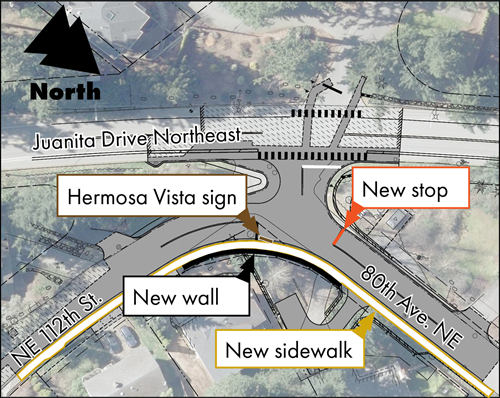 Update (March 25, 2025) -- The City of Kirkland is planning in 2026 to resume design on a project that will improve Juanita Drive’s intersection with Northeast 112th Street and 80th Avenue Northeast.
Update (March 25, 2025) -- The City of Kirkland is planning in 2026 to resume design on a project that will improve Juanita Drive’s intersection with Northeast 112th Street and 80th Avenue Northeast.
The City expects to begin construction on the project in 2026.
This intersection was previously a feature of the Juanita Drive corridor improvements, which will be complete in spring 2025.
The City Council chose to extract the Hermosa Vista intersection from that project, however, to give the design team more time to acquire necessary right-of-way and, to add a safe crossing across Juanita Drive.
Delaying improvements to this intersection also makes Juanita Drive more drivable during construction and reduces the length of time necessary for construction.
The 80th Avenue Northeast and Northeast 112th Street project will establish a crosswalk across Juanita Drive, add nearly 400 linear feet of sidewalk along Northeast 112th Street and 80th Avenue Northeast and improve safety at the intersections, by realigning the roadway and redistributing some of 80th Avenue Northeast’s gradient. It will also build a retaining wall at the corner of 80th Avenue Northeast and Northeast 112th Street.
To achieve this, Kirkland is purchasing nearly 700 square-feet of privately owned land within the Hermosa Vista neighborhood.
Community feedback about the sign did not influence City Council’s decision to delay this part of the project.